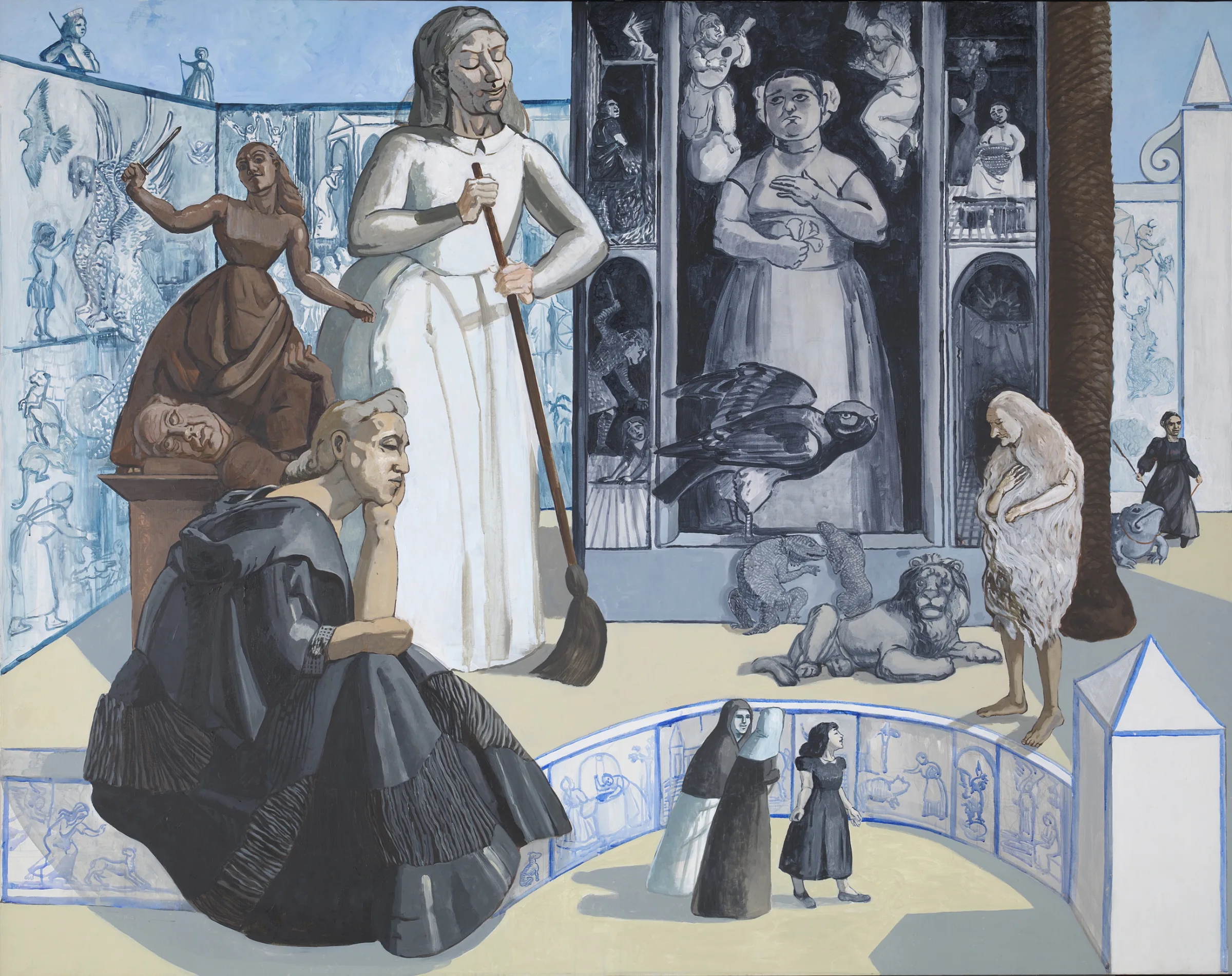
The 2023 Paula Rego exhibition at the National Gallery enabled visiters to explore her huge painting, ‘Crivelli’s Garden’, learn about Crivelli’s altarpiece and the National Gallery staff that inspired it.
Little-known 15th century Italian renaissance painter Carlo Crivelli, who specialised in altarpieces, has usually been overshadowed by his better-known contemporaries such as Botticelli and Bellini. But when in 1989 National Gallery curators decided to commission Paula Rego to produce work, particularly for a long wall in their new dining room, she was shown paintings in the gallery’s collection of Renaissance art which included Carlo Crivelli’s altarpiece, “The Madonna of the Swallow”, with its original base, or predella.
This work caught her eye perhaps because it clearly told a story in a series of panels about the lives of often oppressed, little-known characters who became saints as a result of their suffering; themes that Rego explored many times throughout her career. She could relate this to the ill-treatment, overlooking and marginalising of women across society, including in the art world, which informed much of her work.
So it was the usually overlooked predella of Crivelli’s work, upon which she mainly based her own nine metre-long acrylic painting, comprising five linked canvases, for the National Gallery’s restaurant. Two characters based on Crivelli’s Saints George, Sebastian, Jerome and Catherine, plus the Nativity scene. Rego added figures based on drawings of her own, mostly made from poses by several National Gallery staff members.


The result, Rego’s ‘Crivelli’s Garden’, has her cast of characters appearing in a raft of interwoven stories, myths and folk tales in typical Rego-fashion employing a variety of scales and attitudes. They populate a maze of Crivelli’s re-imagined garden surrounded by Portuguese blue and white tiled walls. The depictions of these courageous and strong women were also based on friends and family of Rego. The original life drawings are presented alongside the painting – allowing us to discover and enjoy the connections between them.
Click here to listen to Paula Rego talk about the central importance of stories to her work.
To learn more of the background to Paula Rego’s work with the National Gallery and her connection to the paintings of Carlo Crivelli, read this piece by Henry Tudor Pole.
Read background to the life and work of the extraordinary artist Crivelli here.
And a short animated film for children about Paula Rego and her work here.
